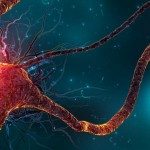Présentation
Speaker: Vladan Lučić (Max Planck Institute of Biochemistry, Germany)
Title: Architecture of synaptic protein assemblies by cryo-electron tomography
Abstract
Synaptic transmission, as well as many other cellular processes, is characterized by complex signaling pathways and a highly regulated molecular machinery that require a precise organization of protein complexes. While physiological experiments, interaction data, and structural studies of purified systems were essential for our understanding of the function of the individual complexes involved, they cannot resolve how the actions of individual complexes integrate because they lack the ability to combine high structural detail with the unperturbed organization of complexes within cells. We employed cryo-electron tomography to simultaneously image multiple presynaptic proteins and lipids at molecular resolution in their native environment, composition and conformation at 2-4 nanometer resolution, and developed computational procedures for template-free detection and unsupervised classification, which allowed us to quantitatively characterize synaptic complexes and analyze their spatial organization. Our data argues that tethers comprising proteins Munc13 and SNAP25 differentially and spatially confine synaptic vesicles with single nanometer precision, thus defining vesicle tethering states and providing molecular mechanisms that guide vesicles towards fusion. We also showed that tripartite trans-synaptic assemblies link synaptic vesicles to postsynaptic ionotropic glutamate receptors, and obtained de novo average structures of ionotropic glutamate receptors in their physiological composition, embedded in plasma membrane. Together, our results advance the hypothesis that synaptic transmission is governed by precisely aligned, molecularly diverse complexes organized in large protein assemblies of variable architecture, and provide a framework for high-resolution in situ explorations of non-periodic molecular assemblies in other cellular systems.



